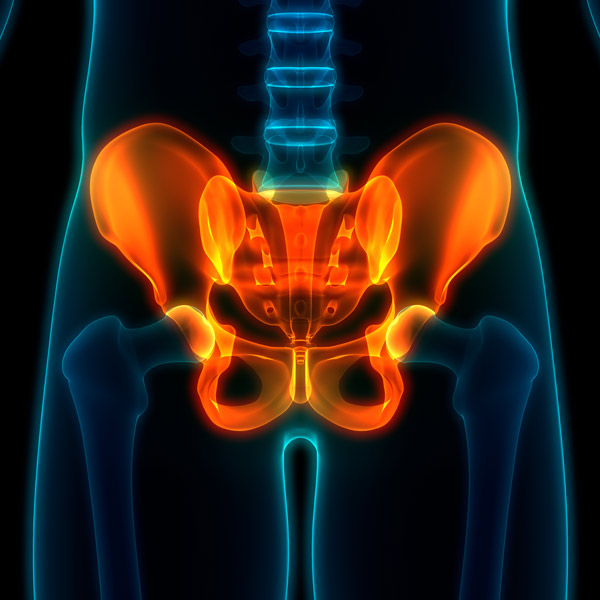Pelvic Health
Pelvic Floor Dysfunction
The pelvic floor is a set of musculature which wraps from the front of your hips to the back of your tailbone. These muscles have a “trampoline” like function in that they absorb shock during functional activities. Their purpose is to maintain a supportive structure for your bowels, bladder, and sexual organs. This supportive unit works in partnership with abdominal muscles to control internal pressure which, when damaged or altered, can result in pelvic floor dysfunction.

Who Can Benefit From Pelvic Floor Rehabilitation?
Females or males experiencing:
- Urinary incontinence
- Pelvic Organ Prolapse
- Chronic Pelvic Pain
- Painful Intercourse
- Sexual Dysfunction
- Pregnancy & Post-Partum
- Constipation
- Fecal Incontinence
How Can Physical Therapy Help Me?
Just like when any other group of muscles in the body is damaged, therapeutic intervention is necessary to help return the individual to their prior functional level. When an athlete tars their ACL or has a quadriceps strain, common practice is to complete a course of therapy. Therefore, why should it be any different for those that live with pelvic floor dysfunction?
What Should I Expect With a Pelvic Floor Rehab Program?
We recommend you schedule an appointment to talk with one of our highly trained physical therapists. Or, call the Honesdale or Carbondale offices (the two locations currently offering this service) and we can schedule a time for a phone conversation. The “steps” involved in your care are as follows:
Step 1: Initial Evaluation
What to expect:
- Upon entering the clinic, you will be provided with questionnaires to complete.
- Next, you and your physical therapist will discuss any current limitations you have and will discuss what form of treatment may best suit your needs.
- Examination techniques may include: assessing posture , pelvic muscle strength (including the abdominals) and an analysis of your movement mechanics during common daily tasks.
- Your emotions are always respected and assessment techniques can be altered to fit specific comfort levels.
Step 2: Weekly Visits
Based on your examination results, a therapy schedule will be recommended.
Step 3: Home Exercise Program
While you work with your therapist during one-on-one sessions, a home exercise program prescription will also be given to maintain progress at home and within community environments.

